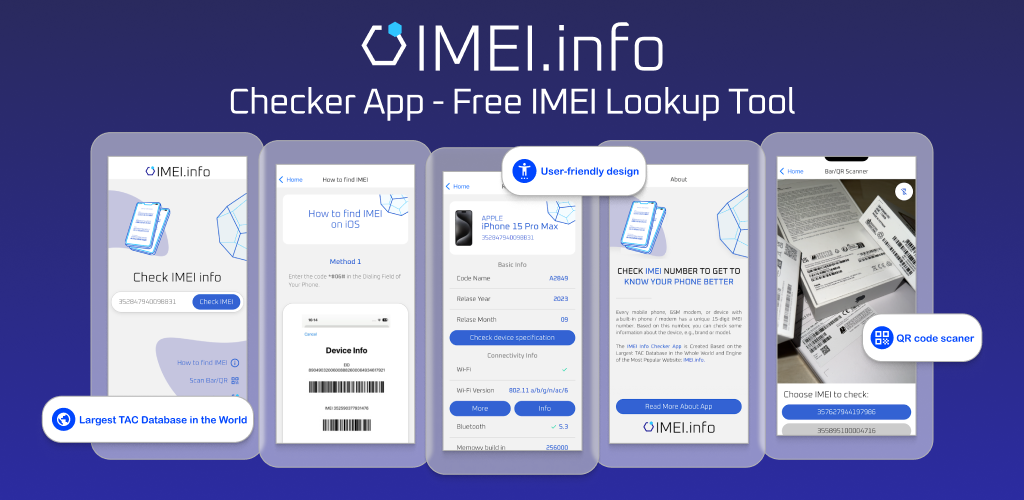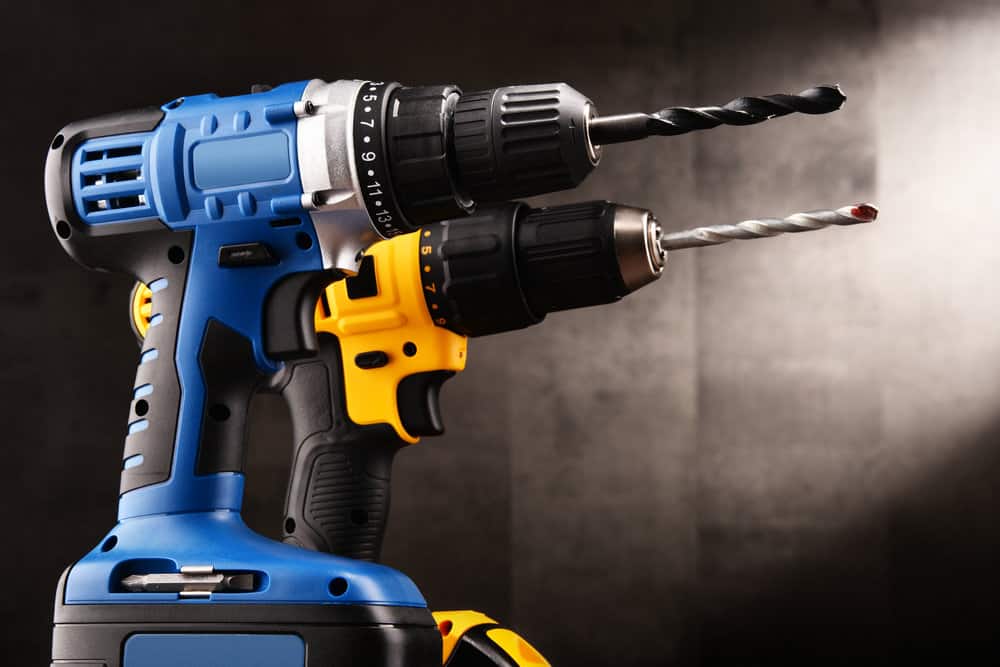Keeping your power tools clean and well-maintained is not just about aesthetics; it's an essential part of ensuring they operate effectively and safely. Over time, dust, grime, and other particles can accumulate in your tools' nooks and crannies, impeding their performance. By regularly cleaning your power tools, you're investing in their longevity and optimal functionality.
So how exactly do you go about this? Well, the process isn't as daunting as you might think. What's key here is knowing the right methods to use for each tool type and understanding that a little effort goes a long way. You don't need to be a professional handyman or technician to keep your gear in tip-top shape – with some guidance, anyone can do it.
Remember: Safety First. Before starting any cleaning procedure on your power tools, always make sure they're disconnected from any power source. This simple act will prevent accidental startups that could result in injuries or damage. Now let's delve into the nitty-gritty of keeping those power tools clean!
Understanding Power Tool Maintenance
Let's dive right into the heart of power tool maintenance. It's not just about wiping your tools down after use - although that's a good start. It's a comprehensive process that ensures you're getting the best performance out of your power tools for as long as possible.
You see, proper maintenance extends the life of your power tools significantly. Keeping them clean and well-lubricated prevents premature wear and tear, saving you from costly replacements in the long run. Not to mention, it reduces workplace accidents caused by malfunctioning equipment.
Maintaining your power tools entails different tasks depending on what type they are:
- For electric power tools: Regularly check the cords for any signs of fraying or damage. A damaged cord can be a serious safety hazard.
- For battery-powered tools: Be sure to remove batteries before cleaning or storing them away, and always recharge batteries only when they're nearly fully depleted.
- For pneumatic tools: Drain air tanks often to prevent moisture buildup which can lead to rusting.
Remember that every tool is unique and might require specific care based on its make and model. Always refer back to your owner’s manual for instructions tailored specifically for each tool.
Lastly, don't forget about storage! Storing your power tools properly plays an important role in their durability too. Keep them in cool dry places where humidity levels are low since moisture can cause corrosion.
In essence, maintaining your power tools isn't merely a chore—it's an investment towards their longevity and efficiency!
Importance of Cleaning Power Tools
You might be wondering why you need to clean your power tools regularly. After all, aren't they meant to handle the tough jobs and get a bit dirty in the process? Well, yes, but that's not the whole story. When it comes to maintaining your power tools, cleanliness is more than just about aesthetics.
First off, let's talk efficiency. Your power tools are designed for optimal performance when they're in their best shape. Dust and debris build-up can hinder their function and result in less precise cuts or drills. It's like trying to see through a dusty window; it just doesn't work as well.
Next up is longevity. Power tools aren't cheap, and if you want yours to last longer, regular cleaning is key. Grit and grime can cause wear and tear on moving parts over time. You wouldn’t ignore oil changes on your car would you? Same principle applies here.
Safety should also be at the forefront of any discussion about tool maintenance. Dirty or poorly maintained equipment can lead to malfunctions which could potentially cause injuries or accidents on the job site or even at home.
Finally, there's cost effectiveness - remember those expensive replacement parts we mentioned earlier? Regular cleaning helps avoid unnecessary repairs or replacements by keeping everything running smoothly.
- Efficiency: A clean tool works better.
- Longevity: Cleanliness extends the life of your tools.
- Safety: A clean tool is a safe tool.
- Cost Effectiveness: Avoids costly repairs/replacements.
So there you have it – cleaning your power tools isn't just an aesthetic choice; it’s a practical one that impacts efficiency, longevity, safety, and cost effectiveness!
Safety Measures Before Cleaning Power Tools
Before you dive into cleaning your power tools, it's critical to take a few safety precautions. You're dealing with potentially dangerous machines after all, and the last thing you want is an accident on your hands.
First and foremost, make sure your tool is unplugged before you start cleaning. It might seem like a no-brainer, but you'd be surprised at how often this simple step gets overlooked. Now's not the time for shortcuts or oversights - it's better to be safe than sorry.
Next up, remember to remove any detachable parts or accessories from your power tool. This includes bits, blades, and other sharp objects that could cause injury if mishandled. Once removed, these parts can be cleaned separately and safely.
Also paramount in this process is wearing the right protective gear. A good pair of work gloves will protect your hands from sharp edges while providing a firm grip during cleaning. Safety glasses are also a must-have to shield your eyes from dust particles or any small pieces that may dislodge during the cleaning process.
Lastly but importantly, ensure you have adequate ventilation when using chemical cleaners or solvents on your tools - some of these can produce fumes that are harmful if inhaled in large quantities.
- Unplug tools
- Remove detachable parts
- Wear protective gear
- Ensure proper ventilation
By taking these steps seriously and consistently applying them each time you clean your power tools, you're setting yourself up for success - keeping both yourself and your equipment damage-free.
Step-by-Step Guide: How to Clean Handheld Power Tools
You've spent a good amount of money on your power tools and naturally, you'd want them to last. Keeping them clean isn't just about aesthetics - it's also key for their longevity and performance.
First thing's first, make sure your tools are unplugged or the batteries are removed before starting the cleaning process. Safety should always be your top priority. Use a dry brush or compressed air to remove any loose dust or debris from the tool. You'll be surprised at how much buildup there can be after even just one use.
Next step is taking care of rust if there's any present on your tool. An easy home solution for this is using white vinegar - soak the rusted part in it overnight then scrub off with a stiff-bristled brush. This works because vinegar contains acetic acid which reacts with rust and dissolves it away.
Then comes lubrication, an underrated but essential part of maintenance that keeps your tools functioning smoothly. Apply oil sparingly where metal parts meet or rotate against each other, but avoid getting it on plastic components as this could cause damage.
Finally, wipe down all surfaces with a clean cloth dampened with soapy water followed by a dry one to ensure no moisture is left behind which can lead to corrosion over time.
Remember:
- Always unplug or remove batteries before cleaning.
- Remove loose dust/debris regularly.
- Treat rust promptly using effective methods like vinegar soaking.
- Lubricate moving metal parts often without harming plastic areas.
- Keep tools dry at all times after washing/cleaning.
There you have it! Proper care can dramatically extend the life of your handheld power tools while ensuring they work efficiently every time you need them. So roll up those sleeves and start giving those hardworking tools the TLC they deserve!
Deep Cleaning Stationary Power Tools: A Practical Approach
Stationary power tools, they're the backbone of your workshop. But to keep them running smoothly and efficiently, you'll need to maintain their cleanliness regularly. Over time, dust, grime, and grease can build up on these heavy-duty machines, affecting their performance. So let's dive into some practical ways you can deep clean your stationary power tools.
Start with a general cleaning routine. Use a soft cloth or vacuum cleaner to get rid of surface dirt and dust. It's important not to ignore the small corners and hidden areas where dust tends to accumulate. Don't forget about the air vents either – clogged vents can lead to overheating which isn't good for your equipment.
Next up is the dismantling process - but don't worry! You don’t have to take apart every single piece of your tool for this task. Focus on parts that are easily removable such as blades or drill bits. Once removed, soak them in a solution made from warm water and mild detergent for around 20-30 minutes (depending on the degree of dirtiness). After soaking, gently scrub these parts using an old toothbrush or wire brush until all stubborn stains are gone.
Now comes lubrication - essential for maintaining tool efficiency! Apply oil liberally on moving parts like gears and bearings after drying them thoroughly post-cleaning. This will ensure smooth operations while preventing rust formation.
Lastly, focus on regular maintenance checks even after deep cleaning sessions because it’s just as crucial! Keep an eye out for worn-out components needing replacement or any unusual noises indicating potential problems.
Remember that each type of stationary power tool may require specific cleaning methods based on its design and function:
- Table saws might need blade alignment checks along with cleaning
- Drill presses could benefit from chuck cleanup
- Lathes often require tailstock & headstock attention
So always refer back to your tool's manual for specific instructions. Happy cleaning!
Maintaining the Efficiency of Your Power Tools Post-Clean
Cleaning your power tools isn't just a one-and-done task. You've got to keep up with maintenance to ensure their efficiency long after they're clean. Let's delve into some key steps you can take.
It's crucial that you lubricate your tools regularly. Think of it as giving your power tools a well-deserved spa day! Lubrication reduces friction, improves performance, and extends the lifespan of your tools. A simple rule: if it spins or moves, lube it!
You'll also want to store them correctly. It might seem convenient to leave them out on the workshop table or toss them haphazardly in a drawer - but resist that urge! Proper storage protects from dust, moisture, and accidental damages. Consider investing in cases designed for tool storage or wall-mounted racks which keep them organized while saving space.
Regularly inspecting your tools is another must-do item on this list. You need to be on the lookout for any signs of wear and tear like loose parts or frayed cords which could lead to bigger problems down the line.
Lastly, remember not all cleaning solutions are created equal when it comes to caring for power tools post-clean:
- Use an air compressor: This helps blow off any remaining dust particles.
- Opt for oil-based solutions: They're great at preventing rust.
- Avoid water-based cleaners: They could lead to corrosion over time.
By following these guidelines, you're setting yourself up for success by ensuring your power tools stay efficient and reliable long after they've been cleaned. Remember - taking good care of your equipment now means less replacement costs down the road. So develop these habits today; future you will thank present you!
Common Mistakes to Avoid When Cleaning Power Tools
When you're taking care of your power tools, it's easy to dive right in and start scrubbing. But hold on – there are a few common mistakes that can do more harm than good. Let's break them down.
First off, steer clear from using too much water. It's tempting to think that more water equals a better clean, but this isn't the case with power tools. Excessive moisture can lead to rust or electrical faults, which you certainly don't want.
Next up: neglecting the tool's manual. You might think you've got it all figured out, but your tool’s manual often includes specific cleaning instructions and precautions tailored for the particular model. Ignoring these guidelines could damage your tool or even void its warranty.
Another mistake? Using abrasive cleaners or harsh detergents on your tools. Sure, they might make your kitchen spotless, but when it comes to your power tools they can strip protective coatings and cause wear over time.
Let’s not forget about disassembling without keeping track of where each part goes. If you're breaking down a tool for deep cleaning and don’t remember how everything fits back together… well, let’s just say it won’t be pretty trying to figure it out after the fact!
Finally, we'd caution against ignoring routine maintenance in favor of sporadic deep cleans. Regularly dusting off sawdust or wiping away grime will keep your tools running smoothly between those big cleaning days and prolong their lifespan.
By avoiding these missteps:
- You'll save yourself repair costs
- Your tools will last longer
- The performance of the devices will improve
So next time you set about tidying up your toolkit, take heed!
| Maintenance Frequency | Average Lifespan |
| Daily | 10+ years |
| Weekly | 7-10 years |
| Monthly | 3-7 years |
Conclusion: The Role of Regular Cleaning in Prolonging Tool Life
It's been said time and again, but it bears repeating: regular cleaning of your power tools can significantly extend their lifespan. You've invested hard-earned money into these devices, so why not take the extra step to ensure they last?
Proper maintenance isn't just about dusting off the exterior or wiping down the handles. It goes deeper than that. It's about getting into the crevices, removing grime from moving parts, and ensuring that each component is functioning at its optimum level. Let's face it - a well-maintained tool not only lasts longer but also operates more efficiently.
Consider this comparison:
These are estimates based on general industry standards and may vary depending on specific tool usage and brand.
The numbers speak for themselves. Tools maintained daily have the potential to outlive those cleaned less frequently by several years.
When you neglect regular cleaning, debris can build up within your tools. This accumulation can cause friction between moving parts which leads to increased wear and tear over time. By simply incorporating routine cleanings into your schedule, you're preventing premature breakdowns while improving performance.
To sum up everything we've discussed:
- Frequent cleaning extends power tool lifespan
- Proper maintenance involves thorough clean-ups beyond surface level
- Neglect accelerates wear and tear due to internal debris buildup
Remember, it's not just about prolonging the life of your tools but also getting the most out of them with every use.

How to Add and Remove eSIM from Your Phone
Gone are the days of fumbling with tiny SIM cards! eSIM technology is revolutionizing smartphone connectivity, offering a world of flexibility and convenience. This guide unlocks the secrets of adding, removing, and managing eSIMs on your phone.

Mobile SEO Success: Tips for Effective Data Analytics
In today's digitally driven world, mastering mobile SEO is not just an option—it's a necessity. With the introduction of Google's mobile-first indexing, the emphasis has shifted dramatically towards optimizing for mobile users. This shift means that the mobile-friendly version of your website now plays a crucial role in determining your search engine rankings across all devices. If you're aiming to climb the ranks in SERPs and captivate a growing audience of mobile users, embracing effective mobile SEO analytics is your key to success. This guide dives deep into the essentials of tracking and analyzing mobile traffic, offering actionable insights and the latest tools to help you thrive in the competitive digital landscape. Whether you're looking to refine your strategy, enhance user experience, or simply understand the vast mobile market, these tips will equip you with the knowledge to analyze and optimize with precision. Let's unlock the full potential of your mobile SEO efforts and drive more traffic like never before!

How Many eSIMs Can You Have on an Android Phone?
This guide tackles how many eSIMs your phone can hold, why the EID (eSIM ID) matters, and how to find it. Unlock the power of eSIMs and experience seamless mobile freedom on your Android phone!

How Many eSIMs Can You Have on an iPhone?
The iPhone's eSIM revolutionizes mobile connectivity! Ditch the physical SIM juggling act and embrace the freedom of multiple lines. This guide dives into how many eSIMs your iPhone can hold, explores the role of the EID, and unveils the benefits of eSIM technology.

How to Check Recent Activities on Your Phone?
In our interconnected digital landscape, smartphones have become extensions of ourselves. They serve multiple purposes, from communication and entertainment to supporting our work. But have you ever pondered your phone's daily routines? Maybe you are keen on understanding how your time is allocated each day or discovering which apps dominate your screen time. There's also the valid concern of safeguarding the security and privacy of your digital world.

Free Monster Hunter Now GPS Spoofer for iOS/Android no Banned - iToolPaw iGPSGo
Monster Hunter Now is an exciting game that has captivated the hearts of many gamers around the world. With its immersive gameplay and stunning graphics, it's no wonder that players are always on the lookout for ways to enhance their gaming experience. One way to do this is by using a GPS spoofer, which allows players to hunter monsters outside without physically moving. In this article, we will explore the options available for free Monster Hunter Now GPS spoofers for iOS and Android, and discuss whether or not you will get banned for using them.

How many eSIMs can be used in iPhone?
Are you looking to streamline your mobile experience with an eSIM for your iPhone? The advent of eSIM technology has revolutionized the way we connect, allowing for a more seamless and efficient use of our devices. With an eSIM iPhone, you can forget about the hassle of physical SIM cards and enjoy the benefits of multiple network plans on a single device. But how many eSIMs can an iPhone support? And how do you go about adding an eSIM to your iPhone? In this article, we'll dive into the ins and outs of eSIM capabilities on your SIM iPhone, providing you with a step-by-step guide to getting set up. Keep reading to unlock the full potential of your iPhone with eSIM technology and learn how to enhance your connectivity with ease.

IMEI Info Checker App
The awaited moment has arrived! After a period of anticipation, we take immense pride in announcing the launch of the IMEI Info Checker App, marking a pivotal moment in accessing concealed mobile device information. In today's digitally intertwined landscape, understanding your device's nuances is pivotal. This long-awaited unveiling undoubtedly simplifies access to concealed information about any mobile device. Soon available on the App Store for iOS and the Play Store for Android, this app promises a transformative shift in how users interact with their device data.



















